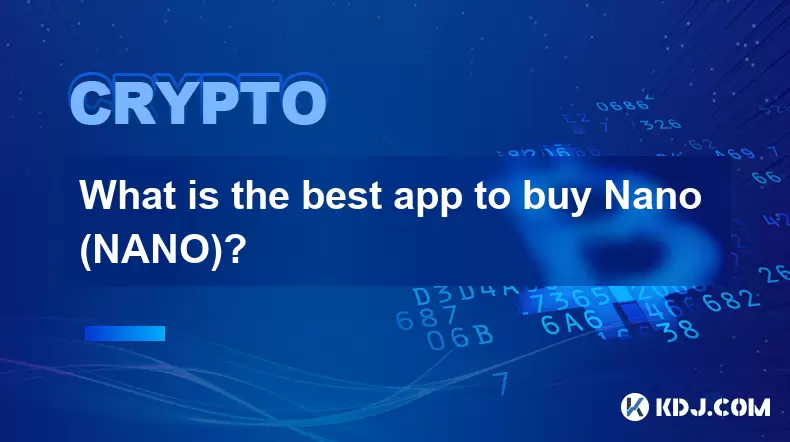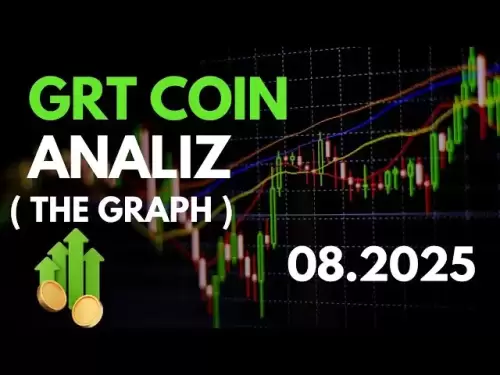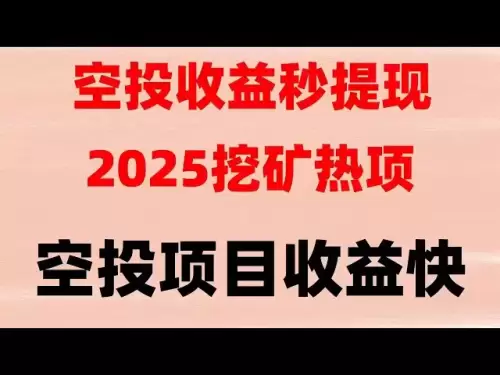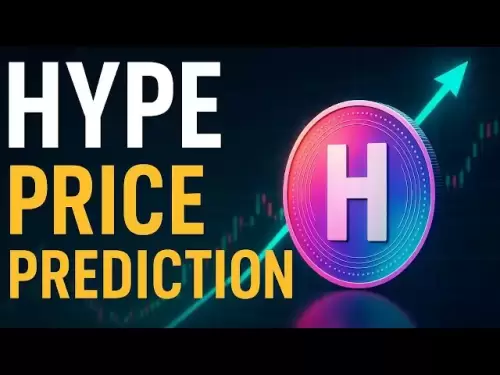-
 Bitcoin
Bitcoin $119300
2.40% -
 Ethereum
Ethereum $4254
-0.20% -
 XRP
XRP $3.184
-1.38% -
 Tether USDt
Tether USDt $1.000
0.00% -
 BNB
BNB $803.9
0.58% -
 Solana
Solana $183.1
1.50% -
 USDC
USDC $0.0000
0.01% -
 Dogecoin
Dogecoin $0.2339
-2.87% -
 TRON
TRON $0.3384
0.88% -
 Cardano
Cardano $0.8018
-0.29% -
 Hyperliquid
Hyperliquid $45.13
3.14% -
 Chainlink
Chainlink $22.10
0.96% -
 Stellar
Stellar $0.4439
-0.94% -
 Sui
Sui $3.875
-0.73% -
 Bitcoin Cash
Bitcoin Cash $570.7
0.24% -
 Hedera
Hedera $0.2589
-2.90% -
 Ethena USDe
Ethena USDe $1.001
-0.01% -
 Avalanche
Avalanche $23.83
-1.73% -
 Litecoin
Litecoin $123.8
2.61% -
 Toncoin
Toncoin $3.351
-1.13% -
 UNUS SED LEO
UNUS SED LEO $9.103
1.13% -
 Shiba Inu
Shiba Inu $0.00001356
-1.40% -
 Uniswap
Uniswap $10.93
-0.19% -
 Polkadot
Polkadot $4.057
-1.97% -
 Dai
Dai $1.000
0.01% -
 Cronos
Cronos $0.1646
4.66% -
 Ethena
Ethena $0.7974
8.11% -
 Pepe
Pepe $0.00001208
-2.89% -
 Bitget Token
Bitget Token $4.445
-1.70% -
 Monero
Monero $268.8
-2.00%
How to calculate Ethereum network fee? How to reduce transaction costs?
To manage Ethereum fees, understand gas price and limit, use tools like Etherscan, and consider strategies like batching transactions and using Layer 2 solutions.
May 08, 2025 at 02:15 am

Understanding and managing Ethereum network fees is crucial for anyone involved in transactions on the Ethereum blockchain. The network fee, also known as gas fee, is the amount of Ether (ETH) required to successfully conduct a transaction or execute a smart contract on the Ethereum network. Calculating these fees and finding ways to reduce them can significantly impact your overall costs and efficiency when dealing with Ethereum transactions.
What are Ethereum Network Fees?
Ethereum network fees, or gas fees, are payments made by users to compensate for the computational energy required to process and validate transactions or smart contracts on the Ethereum blockchain. These fees are essential for the network's operation, as they incentivize miners to include transactions in the blocks they mine. The fee is measured in units called "gas," with each operation on the Ethereum network having a specific gas cost.
How to Calculate Ethereum Network Fees?
Calculating Ethereum network fees involves understanding the two main components: gas price and gas limit.
Gas Price: This is the amount of ETH you are willing to pay per unit of gas. It is usually measured in Gwei, where 1 Gwei is equal to 0.000000001 ETH. The gas price can fluctuate based on network congestion and demand.
Gas Limit: This is the maximum amount of gas you are willing to use for your transaction. Different types of transactions have different gas limits. For example, a simple ETH transfer might require a gas limit of 21,000, while a more complex smart contract interaction might need more.
To calculate the total network fee, you multiply the gas price by the gas used. The gas used is the actual amount of gas consumed by the transaction, which can be less than or equal to the gas limit.
For example, if you set a gas price of 20 Gwei and the transaction uses 21,000 gas, the total fee would be:
[ \text{Total Fee} = \text{Gas Price} \times \text{Gas Used} = 20 \text{ Gwei} \times 21,000 = 420,000 \text{ Gwei} ]
Converting 420,000 Gwei to ETH gives:
[ 420,000 \text{ Gwei} \times 0.000000001 \text{ ETH/Gwei} = 0.00042 \text{ ETH} ]
Tools for Calculating Ethereum Network Fees
Several tools can help you estimate and calculate Ethereum network fees:
Etherscan: This is a popular blockchain explorer that provides real-time data on gas prices and allows you to estimate fees for different types of transactions.
ETH Gas Station: Another useful tool that provides detailed information on current gas prices and transaction times, helping you optimize your fees.
MetaMask: A widely used Ethereum wallet that automatically calculates and suggests gas prices based on current network conditions.
How to Reduce Ethereum Transaction Costs?
Reducing Ethereum transaction costs involves several strategies that can help you manage and minimize the fees you pay:
Optimize Gas Price: Adjusting the gas price based on network conditions can significantly impact your costs. During periods of low network congestion, you can set a lower gas price and still have your transaction processed in a reasonable time.
Batch Transactions: If you need to perform multiple transactions, consider batching them into a single transaction. This can reduce the total gas used and, consequently, the total fee.
Use Layer 2 Solutions: Layer 2 scaling solutions like Optimism, Arbitrum, or Polygon can help reduce transaction costs by processing transactions off the main Ethereum chain and then settling them in batches.
Timing Your Transactions: The Ethereum network's congestion can vary throughout the day. By timing your transactions during off-peak hours, you can often secure lower gas prices.
Practical Steps to Reduce Ethereum Network Fees
Here are detailed steps you can follow to reduce your Ethereum transaction costs:
Check Current Gas Prices: Use tools like Etherscan or ETH Gas Station to monitor current gas prices. Look for the "low" or "standard" gas price recommendations.
Set Your Gas Price: In your Ethereum wallet, such as MetaMask, you can manually set the gas price. If the current low gas price is 10 Gwei, you might set your transaction to use 10 Gwei or slightly higher to ensure faster processing.
Adjust Gas Limit: For simple transactions like ETH transfers, the default gas limit of 21,000 is usually sufficient. For more complex transactions, you might need to adjust the gas limit based on the specific operation.
Use Gas Estimators: Many wallets and platforms offer gas estimators that suggest optimal gas prices and limits based on your transaction type. Use these to get a more accurate estimate of your fees.
Consider Layer 2 Transactions: If your transaction is eligible, consider using a Layer 2 solution. For example, you can transfer ETH to a Layer 2 network like Polygon, perform your transactions there, and then bridge back to the main Ethereum chain when necessary.
Batch Transactions: If you need to send multiple transactions, consider using a smart contract that can batch these transactions. This can be particularly useful for decentralized finance (DeFi) operations.
Monitoring and Adjusting Your Strategy
As Ethereum network conditions change, it's important to continually monitor and adjust your fee strategy:
Regularly Check Gas Prices: Gas prices can fluctuate rapidly. Regularly checking tools like Etherscan can help you stay updated and adjust your transactions accordingly.
Experiment with Different Gas Prices: Over time, you can experiment with different gas prices to find the optimal balance between cost and transaction speed that suits your needs.
Stay Informed About Network Upgrades: Ethereum is constantly evolving, with upgrades like EIP-1559 aimed at improving fee structures. Staying informed about these changes can help you adapt your strategies.
Frequently Asked Questions
Q1: Can I get a refund if my transaction uses less gas than the gas limit I set?
A1: Yes, if your transaction uses less gas than the gas limit you set, you will receive a refund for the unused gas. However, you will still pay for the gas that was actually used during the transaction.
Q2: How does the EIP-1559 upgrade affect Ethereum network fees?
A2: EIP-1559 introduced a new fee structure that includes a base fee, which is burned, and an optional tip to miners. This change aims to make gas fees more predictable and potentially reduce the overall cost of transactions by burning a portion of the fees.
Q3: Are there any risks associated with using Layer 2 solutions to reduce transaction costs?
A3: While Layer 2 solutions can significantly reduce transaction costs, they come with their own set of risks, such as potential security vulnerabilities and the need to bridge funds back to the main Ethereum chain, which can introduce additional fees and delays.
Q4: How do I know if my transaction will be processed quickly with a lower gas price?
A4: The speed of transaction processing with a lower gas price depends on network congestion. During times of low demand, transactions with lower gas prices can still be processed relatively quickly. Tools like ETH Gas Station provide estimates of transaction times based on current network conditions, which can help you make informed decisions.
Disclaimer:info@kdj.com
The information provided is not trading advice. kdj.com does not assume any responsibility for any investments made based on the information provided in this article. Cryptocurrencies are highly volatile and it is highly recommended that you invest with caution after thorough research!
If you believe that the content used on this website infringes your copyright, please contact us immediately (info@kdj.com) and we will delete it promptly.
- Dogecoin, Toncoin, and Cold Wallet: Navigating Crypto's Latest Waves
- 2025-08-11 12:30:11
- Ethereum's Resilience: Short Liquidations and Key Support Levels
- 2025-08-11 12:50:12
- Bitcoin Price Rockets Towards $121,000: What's Fueling the BTC Surge?
- 2025-08-11 13:10:12
- Bitcoin's Open Interest Surges 45%: Is $150K Next?
- 2025-08-11 13:30:12
- Pudgy Penguins Soar: Navigating Collectibles and Distribution in the NFT World
- 2025-08-11 12:50:12
- Crypto Altcoins: Is Today the Day to Invest for NYC-Sized Gains?
- 2025-08-11 12:55:12
Related knowledge

How to purchase Aragon (ANT)?
Aug 09,2025 at 11:56pm
Understanding Aragon (ANT) and Its PurposeAragon (ANT) is a decentralized governance token that powers the Aragon Network, a platform built on the Eth...

Where to trade Band Protocol (BAND)?
Aug 10,2025 at 11:36pm
Understanding the Role of Private Keys in Cryptocurrency WalletsIn the world of cryptocurrency, a private key is one of the most critical components o...

What is the most secure way to buy Ocean Protocol (OCEAN)?
Aug 10,2025 at 01:01pm
Understanding Ocean Protocol (OCEAN) and Its EcosystemOcean Protocol (OCEAN) is a decentralized data exchange platform built on blockchain technology,...

Where can I buy UMA (UMA)?
Aug 07,2025 at 06:42pm
Understanding UMA and Its Role in Decentralized FinanceUMA (Universal Market Access) is an Ethereum-based decentralized finance (DeFi) protocol design...

How to buy Storj (STORJ) tokens?
Aug 09,2025 at 07:28am
Understanding Storj (STORJ) and Its Role in Decentralized StorageStorj is a decentralized cloud storage platform that leverages blockchain technology ...

What is the best app to buy Nano (NANO)?
Aug 09,2025 at 03:35am
Understanding Nano (NANO) and Its Unique FeaturesNano is a feeless, instant cryptocurrency designed for fast peer-to-peer transactions. Unlike many ot...

How to purchase Aragon (ANT)?
Aug 09,2025 at 11:56pm
Understanding Aragon (ANT) and Its PurposeAragon (ANT) is a decentralized governance token that powers the Aragon Network, a platform built on the Eth...

Where to trade Band Protocol (BAND)?
Aug 10,2025 at 11:36pm
Understanding the Role of Private Keys in Cryptocurrency WalletsIn the world of cryptocurrency, a private key is one of the most critical components o...

What is the most secure way to buy Ocean Protocol (OCEAN)?
Aug 10,2025 at 01:01pm
Understanding Ocean Protocol (OCEAN) and Its EcosystemOcean Protocol (OCEAN) is a decentralized data exchange platform built on blockchain technology,...

Where can I buy UMA (UMA)?
Aug 07,2025 at 06:42pm
Understanding UMA and Its Role in Decentralized FinanceUMA (Universal Market Access) is an Ethereum-based decentralized finance (DeFi) protocol design...

How to buy Storj (STORJ) tokens?
Aug 09,2025 at 07:28am
Understanding Storj (STORJ) and Its Role in Decentralized StorageStorj is a decentralized cloud storage platform that leverages blockchain technology ...

What is the best app to buy Nano (NANO)?
Aug 09,2025 at 03:35am
Understanding Nano (NANO) and Its Unique FeaturesNano is a feeless, instant cryptocurrency designed for fast peer-to-peer transactions. Unlike many ot...
See all articles

























































































